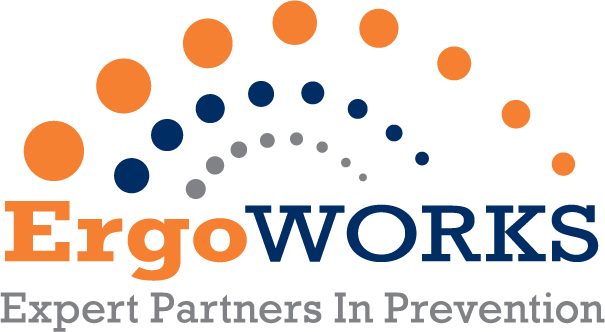As a Human Resources Director at a Minnesota-based company, you're undoubtedly familiar with the importance of hiring the right talent, promoting workplace safety, and supporting employees in returning to work after an injury. A Job Demands Analysis (JDA) is a powerful tool that enables organizations to achieve these goals by clearly defining the physical, cognitive, and environmental requirements of a job. In this blog, we’ll walk through the steps of conducting a JDA, the process of data collection and report writing, and the benefits of incorporating the JDA into job descriptions, hiring practices, ergonomic risk assessments, and return-to-work strategies.
Whether you are performing the Job Demands Analysis yourself, or hiring an outside expert, understanding the steps of the process will help in the planning and implementation.
What Is a Job Demands Analysis?
A JDA systematically evaluates the essential functions of a job, and documents the physical, mental, and environmental demands involved. This analysis is critical for optimizing recruitment, ensuring workplace safety, and fostering employee well-being. The finished report can be used to update job descriptions with accurate, current information. It can also guide safety, EHS, and ergonomic goal setting. Finally, it can be used to communicate with medical providers regarding workability and a return to work plan for injured workers.
Steps to Conduct a Job Demands Analysis
The first step in conducting a Job Demands Analysis is to define the audience and purpose of the final document. Identify the job titles that need analysis and clarify the purpose, whether it’s for hiring, compliance, or injury prevention. Who is the audience? Having clear objectives helps streamline the entire process.
Next, gather preliminary information by reviewing job descriptions, organizational charts, and standard operating procedures (SOPs). This step helps you understand how the job contributes to the organization’s goals and sets a foundation for data collection and observation of the job.
Conducting on-site observations and collecting data is crucial. Observations provide a firsthand understanding of the job’s demands. Shadow employees as they perform their daily tasks, noting physical positions and postures, environmental conditions, and workflow processes. Record the duration and frequency of tasks, postures, and equipment used. Document the heights, weights, distances, and duration of physical tasks. Measure physical requirements using tools like force gauges and scales to quantify lifting, pushing, or pulling tasks.
During the observation portion, identify potential ergonomic risk factors, such as awkward postures or repetitive motions, that could impact employee well-being. Ask the employee about suggestions to make their job easier. Suggestions for ergonomic improvements can be documented in the report as well as other ergonomic recommendations.
Cognitive and environmental demands are equally important. Evaluate the mental requirements of the job, such as problem-solving, attention to detail, and communication. Document environmental factors, including noise levels, temperature, and lighting, to provide a comprehensive view of job conditions.
Finally, compile and validate data by cross-checking findings with employees and supervisors. Address any discrepancies to ensure a comprehensive and accurate understanding of job demands.
Writing the Job Demands Analysis Report
To structure the report, begin with an executive summary that outlines key findings and objectives. Follow this with detailed sections covering physical, cognitive, and environmental demands. Include appendices for supporting materials, such as photographs or measurement data, to provide additional context.
Clarity and precision are essential in the report. Use clear language, avoiding jargon, and quantify demands wherever possible. For example, specify, “Requires lifting 25 lbs. up to 10 times per hour” as a physical demand can lead to actionable insights. All essential functions should begin with a verb and describe a particular job task in clear language.
Incorporate practical recommendations in the report. Highlight ergonomic improvements, such as workstation adjustments or task rotation. Providing actionable steps makes the report a useful tool for various HR initiatives.
Before finalizing the report, solicit feedback from stakeholders to ensure its completeness and accuracy. Interviews with key stakeholders, including employees, supervisors, and subject matter experts, provide valuable insights. Discuss challenges, expectations, and variations in job performance. Stakeholder input ensures the analysis captures a well-rounded perspective.
Once finalized, the document can be integrated into HR processes seamlessly.
Benefits and Uses of a Job Demands Analysis Document
A well-conducted JDA enhances job descriptions by defining essential functions with precision. This sets clear expectations for candidates and employees, ensuring alignment from the start. It also improves hiring practices by providing data for developing pre-employment physical tests, ensuring candidates can meet the demands of the role.
The analysis identifies and reduces ergonomic risks, proactively addressing factors that could lead to workplace injuries. By designing safer workflows and environments, companies create a healthier workspace for their employees.
A JDA is invaluable in supporting return-to-work strategies. Tailored accommodations for injured employees, based on the analysis, facilitate smoother transitions back to work. Additionally, it streamlines communication with healthcare providers, enabling efficient recovery plans.
Conclusion
A Job Demands Analysis is an indispensable tool for HR leaders committed to optimizing their workforce and promoting a safe, productive workplace. By following the steps outlined above, your organization can build robust job descriptions, hire the right talent, mitigate ergonomic risks, and support employees’ return-to-work journeys. Investing in a comprehensive JDA not only strengthens your company’s operations but also fosters a culture of care and efficiency—a win-win for all.
Rather have an expert do your Job Analysis reports, freeing you up to do what you do best? Schedule a Discovery Call with us today to get started!


